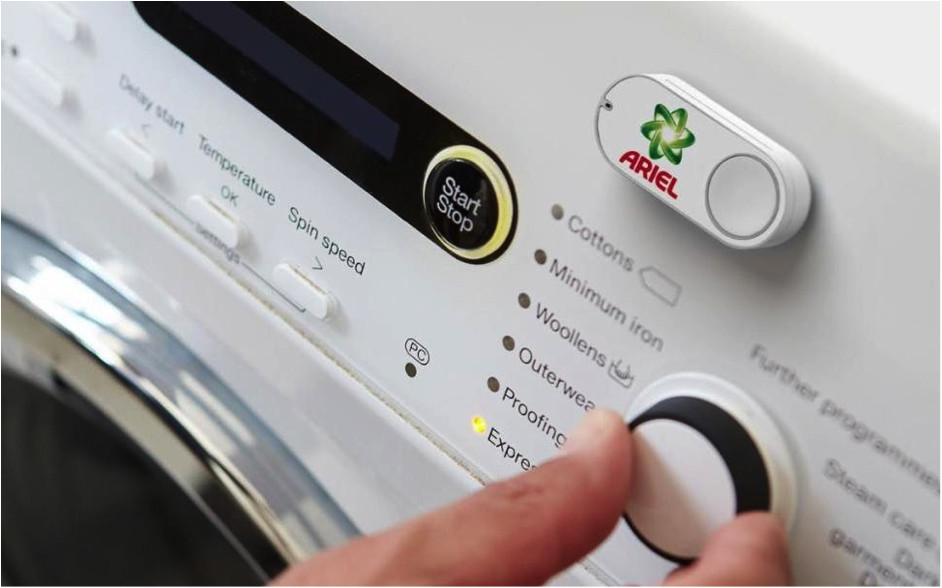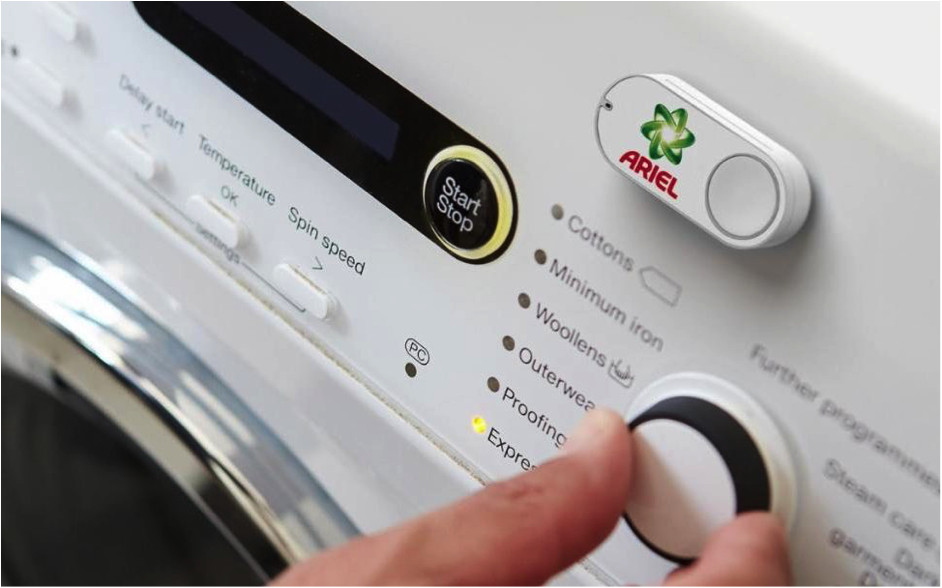


In an increasingly competitive European grocery industry, there is only one certainty: Amazon is here to stay. Success in one of Europe’s largest retail sectors is critical to long term growth for Amazon and while Amazon is yet to gain any significant share within this sector, recent initiatives such as the launch of AmazonFresh, the roll out of the Dash button in the UK, Germany and Austria, as well as Prime Now delivery across Europe, all have major implications for not only grocery retailers but all of Amazon’s competitors.
In France, Carrefour is the first to react to the Amazon threat with the launch of its one hour delivery offer. This service, launched through a dedicated website livraisonexpress.fr, covers nine arrondissements in Paris with costs starting from €4.90. This is likely to be the first of many supermarket responses to Amazon in France, with speed of delivery being the key battle ground.
Growth in the UK grocery market is relatively low, and competition—both offline and online—is intense. The key question is how much share Amazon can expect to gain from established competitors.
Conversely, selling grocery products is strategically important to Amazon’s non-food businesses. The household penetration and purchase frequency of FMCG and grocery products increase the value of Prime membership, which in turn leads to major increases in a household’s loyalty to Amazon.
So what are the key challenges for brick and mortar retailers, and what can they do to minimise the threat from Amazon?
Delivery Speed and Precision
With convenience clearly being a key driver of online grocery shopping, Amazon has focused on its ability to provide delivery options that fit with shoppers’ busy lifestyles. Headline-grabbing initiatives such as delivery by drone prove that Amazon remains at the forefront of logistics and technology advances. The rollout of one-hour delivery slots through Amazon Prime Now in 10 cities and counties in the UK, and major cities throughout Europe, has driven retailers to trial their own version. Click and Collect (especially Click & Drive in France) is already an established mechanic in mainland European countries but even here, retailers will have to react to the one-hour slots. The key challenge for retailers will be offering more convenient service without eroding margins still further – leading to potentially higher delivery charges for customers wanting the premium one-hour service.
Customer Experience
Amazon places the customer experience at the heart of all its initiatives to ensure the shopping experience is as simple and enjoyable as possible. Its sophisticated automation and personalisation technologies ensure that only results that are relevant to an individual shopper are displayed. Amazon is also at the forefront of using enhanced product content (called A+ content) to ensure shoppers understand the products and can select with confidence. . Finally, Amazon’s Vine programme drives of the volume of product reviews and ratings, used by 77% of consumers before making an online purchase (Jupiter Research).
Currently, the Big 4 grocery retailers are lagging behind Amazon in terms of providing an optimised online shopping experience. Many retailers do not support features such as enhanced content or product reviews. These and other factors can help to maintain shopper loyalty, and retailers must therefore use Amazon as a key benchmark when developing their own digital assets and capabilities. This is no easy task as further enhancements, such as Amazon Choice–which makes educated product recommendations for certain –means Amazon is even starting to make decisions for those shoppers willing to grant Amazon the privilege.
Range
As the operator of a large and growing marketplace for “third party” merchants and sellers, Amazon is able to offer an “endless aisle” of shelf-stable goods while assuming limited risk. (After all, Amazon takes its fees on every transaction, but merchants carry the inventory risk.) As Amazon converts more households to grocery shoppers, it will be able to offer them convenient delivery of a range of non-food items that is orders of magnitude larger than most traditional retailers can dream of offering.
Amazon has also launched private label baby wipes, nappies, baby food and coffee in the US. Between its “1P” (retail) and “3P” (marketplace) businesses, Amazon has visibility not only of category-level demand, but precise product-level demand as reflected in searches and product reviews. With these unique sources of intelligence and insight, Amazon may continue to develop its own brands and product range, potentially positioning it not only as a seller of innovative products but a maker itself.
Future developments
If retailers are able to match Amazon on the areas above, what future developments should they be expecting, or even fearing?
Once Amazon has established successful business models in each of its European markets, retailers should expect a swift national roll out of services such as Fresh and Prime Now. This will provide further challenges within the competitive grocery market.
The recent launch of the Amazon Dash device is a headline grabbing initiative but one which proves Amazon’s desire to become fully integrated into shopper’s lives – a one-stop-shop for absolutely all your purchasing needs. Further initiatives such as Amazon Choice, drone deliveries and even the opening of actual brick and mortar Amazon collection stores in the US, highlight Amazon’s commitment to enhancing their loyal shoppers experience. Their ultimate aim is to use the frequency of grocery shops to upsell their shoppers to higher ticket items such as electronics and clothing – all delivered in one simple and quick delivery. If they achieve this, established retailers have every reason to be fearful.
To stay up-to-date on the latest eCommerce news and trends for CPG/FMCG, you might also be interested in signing up to Profitero’s weekly Digital Shelf Digest.


























